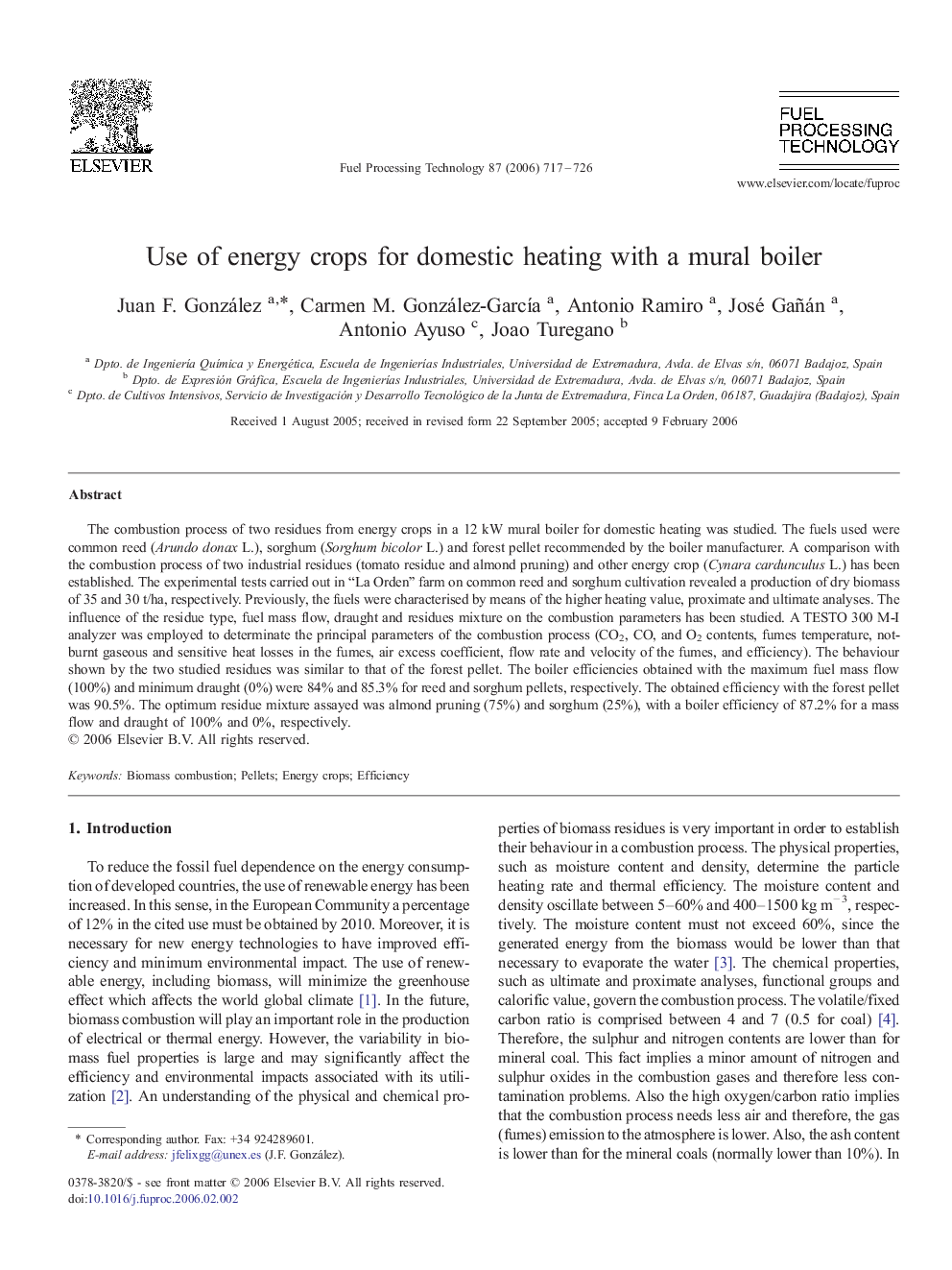| Article ID | Journal | Published Year | Pages | File Type |
|---|---|---|---|---|
| 211460 | Fuel Processing Technology | 2006 | 10 Pages |
The combustion process of two residues from energy crops in a 12 kW mural boiler for domestic heating was studied. The fuels used were common reed (Arundo donax L.), sorghum (Sorghum bicolor L.) and forest pellet recommended by the boiler manufacturer. A comparison with the combustion process of two industrial residues (tomato residue and almond pruning) and other energy crop (Cynara cardunculus L.) has been established. The experimental tests carried out in “La Orden” farm on common reed and sorghum cultivation revealed a production of dry biomass of 35 and 30 t/ha, respectively. Previously, the fuels were characterised by means of the higher heating value, proximate and ultimate analyses. The influence of the residue type, fuel mass flow, draught and residues mixture on the combustion parameters has been studied. A TESTO 300 M-I analyzer was employed to determinate the principal parameters of the combustion process (CO2, CO, and O2 contents, fumes temperature, not-burnt gaseous and sensitive heat losses in the fumes, air excess coefficient, flow rate and velocity of the fumes, and efficiency). The behaviour shown by the two studied residues was similar to that of the forest pellet. The boiler efficiencies obtained with the maximum fuel mass flow (100%) and minimum draught (0%) were 84% and 85.3% for reed and sorghum pellets, respectively. The obtained efficiency with the forest pellet was 90.5%. The optimum residue mixture assayed was almond pruning (75%) and sorghum (25%), with a boiler efficiency of 87.2% for a mass flow and draught of 100% and 0%, respectively.
